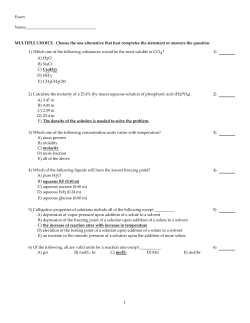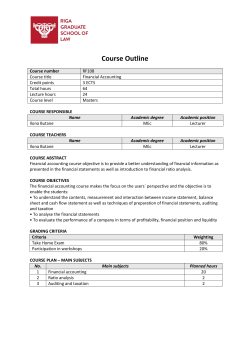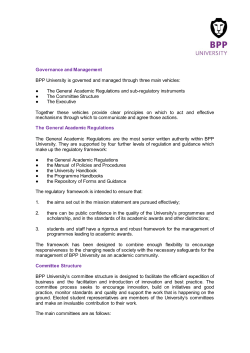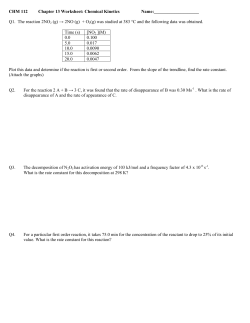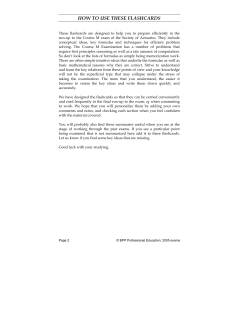
RATES OF CHEMICAL REACTIONS Model 1: What is the rate?
RATES OF CHEMICAL REACTIONS Model 1: What is the rate? The rate of a chemical reaction depends on how quickly the reactants are consumed or, alternatively, how fast the products are formed. The rate is always a positive number so, as [reactant] decreases so: rate of consumption of reactant = - !"#$%& !" !"#$%&'( !" !"#$%#&% !"#$%& !" !"#$ = - ∆[!"#$%#&%] ∆! Critical thinking questions 1. If time is measured in seconds, what are the units of the rate? 2. For the reaction, 3ClO-(aq) à 2Cl-(aq) + ClO3-(aq) time (s) 0 100. [ClO-(aq)] / M 1.20 0.90 [Cl-(aq)] / M 0 0.20 [ClO3-(aq)] / M 0 0.10 Based on this data, calculate 3. (a) rate of consumption of ClO- = (b) rate of production of Cl- = (c) rate of production of ClO3- = Use the chemical equation for the reaction to explain your answer to Q2. Model 2: The rate of a reaction is the rate of consumption of reactant or the rate of production of product whose stoichiometric coefficient is 1 in the balanced equation. Critical thinking questions 1. What is the rate of this reaction? 2. What is the relationship between the rate of consumption of ClO- and the rate of the reaction? 3. What is the relationship between the rate of production of Cl- and the rate of the reaction? (1) Rate of Reaction and the Rate Law THE RATE LAW Model 1: The rate of a reaction depends on how much of each reactant there is Exactly how the rate depends on the concentration of the reactants can only be determined experimentally. It has nothing to do with the chemical equation. For the reaction, 2NO(g) + Br2(g) à 2NOBr(g) Experiment 1 2 3 [NO]initial / M 0.10 0.20 0.20 [Br2]initial / M 0.10 0.10 0.30 initial rate of reaction / M s-1 0.078 0.312 0.936 Critical thinking questions 1. The only change between experiments (1) and (2) is that [NO]initial is doubled. What is the effect of this on the rate? 2. If rate is propotional to [NO]x, what is x? 3. The only change between experiments (2) and (3) is that [Br2]initial is trebled. What is the effect of this on the rate? 4. If rate is propotional to [Br2]y, what is y? 5. Using your answers to Q2 and Q4, complete the rate law: rate = k[NO]x[Br2]y = 6. Between experiments (1) and (3), [NO]initial is doubled and [Br2]initial is trebled, what is the effect on the rate? Is this consistent with your rate law?
© Copyright 2025

